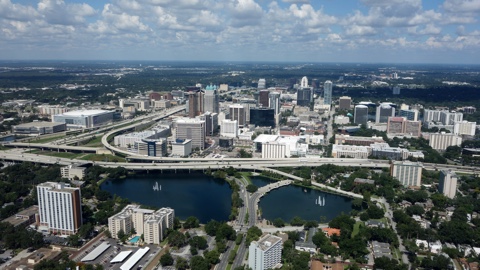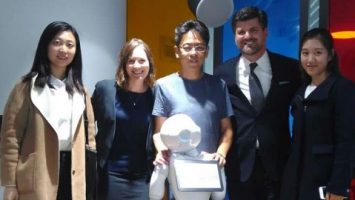
Orlando’s Chief Information Officer (CIO), Rosa Akhtarkhavari, wants to save lives using connected technology. And as more urban areas across the globe are utilizing data collected from sensors, cameras and devices to become smart cities, Akhtarkhavari and the City of Orlando are working hard to build a smarter Orlando.
A smart city improves the efficiency of city operations and the quality of life for its citizens while growing the local economy thanks to data-driven insights. A recent Wall Street Journal lists “the growth of cloud computing; new developments in machine learning; the Internet of Things; and the widespread use of smartphone apps and mobile devices” as key drivers of the smart city movement.
Every city must balance the responsibility of providing services to residents and planning for an unknown future. But what makes Orlando unique is that they have already done the hard work. To date, Orlando has replaced legacy applications with optimized solutions, invested in wireless infrastructure, re-engineered business processes and built relationships between departments to empower agile planning and data-informed responses.
Under Mayor Dyer’s direction, Orlando’s goal to become one of the world’s most “open,” intelligent, interconnected and efficient cities is well underway, with the city leveraging its position as an international destination to showcase smart city initiatives and practices.
Orlando’s use of advanced technologies to improve public safety signals is a key example. The initiative is in the final pre-rollout stages and will equip those on the front lines – law enforcement officers and emergency responders – with body cameras backed up by video surveillance footage, all of which is connected to a central command station. Thanks to edge analytics partnerships, including a robust communications infrastructure and engaged social media platforms, city responders will be able to receive immediate information to help them make decisions fast. Benefits will also stretch to emergencies and disasters situations, in addition to more routine items like optimizing routing and making fire permitting and inspections appointments.
Akhtarkhavari and her team are also placing emphasis on partnerships both within the city and the private sector, resulting in data-driven decisions made in real time that provide first responders with immediate and accurate information that can have life-changing impacts.
“Our public safety officers want reliable information. It is our job to get it to them quickly so they can do their best job,” says Akhtarkhavari. “We have great relationships between our departments. We aren’t order takers, we are partners and work together to provide value.”
With the incredible volume of data collected, Akhtarkhavari is vigilant about collaborating with utility and communication companies to ensure technology solutions have power and connectivity. Part of this entails deployment of small cells to relieve wireless network congestion, which is critical given the amount of data being collected and streamed. And if this expansion continues, Orlando will be on track to power even smarter city solutions.
Akhtarkhavari prioritizes systems and solutions that are secure, scalable and sustainable, and ultimately align with the Smart Orlando vision. She states, “By embedding technology in all aspects of the City, we can streamline operations and share data across business functions to increase the efficiency and accuracy of our service delivery. Using a data-driven approach helps us produce pertinent information while also keeping in mind the interlinked relation between systems and infrastructure.”
The end goal? Delivering positive user experiences to both city personnel and the public, including residents and more than 66 million annual visitors.
While success in Orlando continues to grow, the lead-up was a long time in the making. “Teamwork is required to develop a smart city vision and execute it,” recommends Akhtarkhavari to fellow city planners. “It is important to align city leadership and sponsorship and communication. The more a team is aware of the plan and its progress, the more value they are able to deliver.”
Akhtarkhavari also recommends cities utilize an opportunistic vision, like Orlando’s, in making the most out of every initiative and project. “Identify your city’s strengths, opportunities and possible areas of improvement. Create a plan to manage risks by balancing operations, security and a respect for privacy. And then you deliver results.”
There is a tide of innovation sweeping through Orlando, thanks to leaders like Mayor Dyer and Akhtarkhavari. Residents of “The City Beautiful” should stay engaged because a smarter, more connected and more responsive Orlando is emerging.


